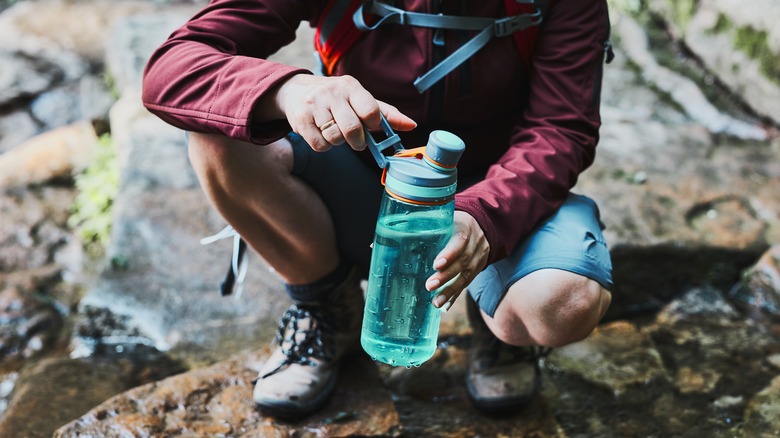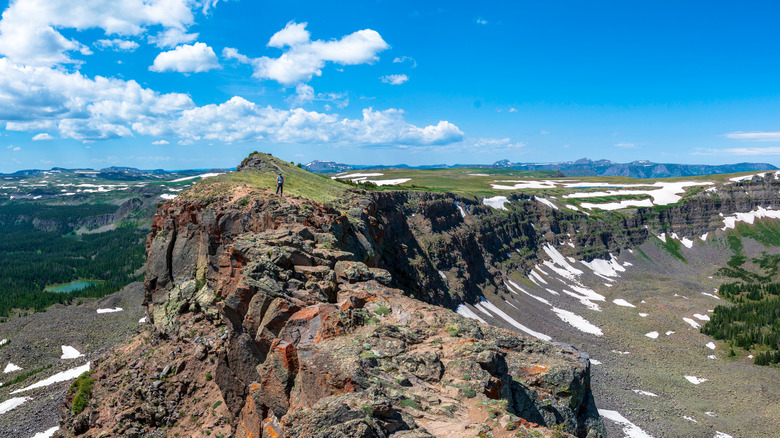The dangers of the Devil’s Causeway hiking trail
One of the most iconic and dangerous features of the Devil’s Causeway is its incredibly narrow stretch. At its narrowest point, this trail is just four feet wide, with drop-offs of 600 to 800 feet on either side. To put things into perspective, it’s around the same width as your average sidewalk but with a truly intimidating drop on either side.
But it’s not just the narrowness of the trail that makes it dangerous. The Devil’s Causeway is also prone to unpredictable weather conditions, especially in the afternoon when thunderstorms are common in this alpine environment. These storms often bring winds, hail, and even snow, making the already challenging trek even riskier. Using tools like OpenSummit or TrekWeather will give you not only the area’s weather forecast but also the conditions on the length of the Devil’s Causeway trail, so you can plan your hike accordingly.
Hiking the Devil’s Causeway in the snow or rain is highly discouraged. The slick conditions can make the already treacherous trail even more difficult to navigate, increasing the risk of falls and accidents. More importantly, there are no guardrails or safety features across the Devil’s Causeway, so hikers must rely solely on their balance and caution. It is important to avoid continuing the hike or crossing the Devil’s Causeway if you see potential inclement weather in the distance, according to the Denver Gazette.
Come prepared for the altitude and terrain

Aside from the height, there’s a less obvious danger associated with the Devil’s Causeway. Colorado’s high elevation is not to be taken lightly, and because the trail culminates at a staggering elevation of nearly 12,000 feet, hikers can experience altitude sickness, fatigue, and shortness of breath. To avoid these issues, it’s essential to prepare yourself and acclimate to the altitude by spending a day or two at a lower elevation before attempting the hike. During your hike, stay well-hydrated and pace yourself to avoid overexertion.
The altitude is only the first hurdle when hiking the Devil’s Causeway. After the difficult hike there to the land bridge, through increasing elevations, you’ll find the Causeway highly exposed, with steep drop-offs and loose rocks on either side. Because of this, wind gusts on the land bridge can reach extreme speeds, prompting some hikers to choose to cross on all fours or even while seated.
The Devil’s Causeway hike isn’t for everyone. So, to ensure a safe hike, it is essential to know your limits and be prepared to turn back if necessary. The Denver Gazette advises that if you have a fear of heights, the Devil’s Causeway should not be attempted. Many hikers have said the decision to turn back was a smart move after seeing the Causeway. Hikers have also noted that cell service on the trail isn’t guaranteed, so hiking on this dangerous trail is safer when done in a group.

